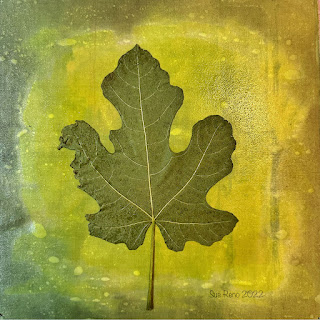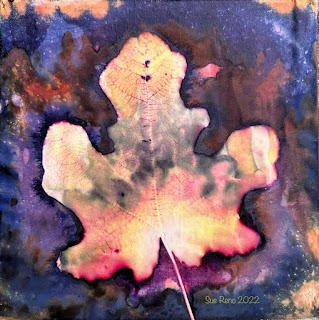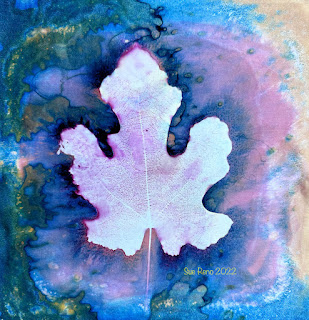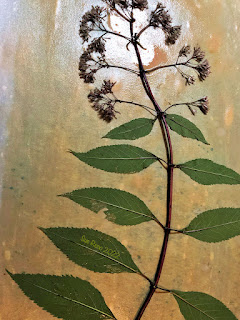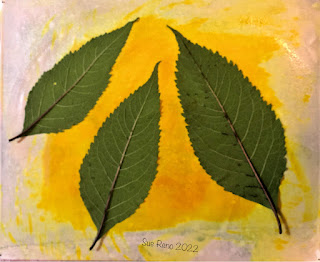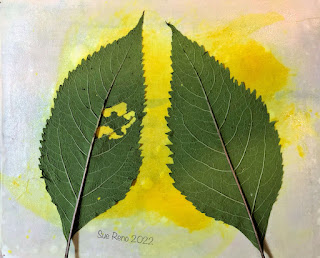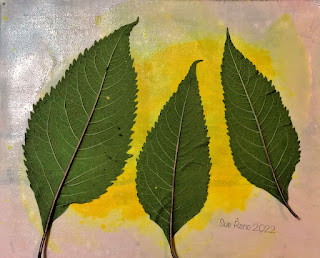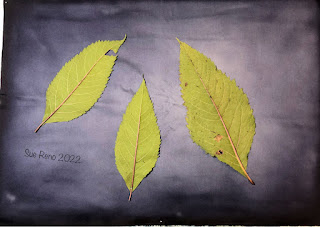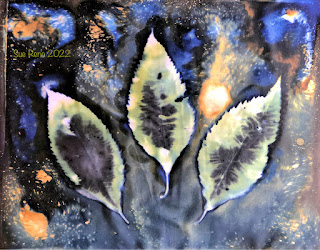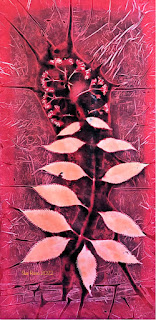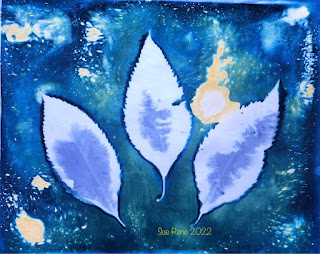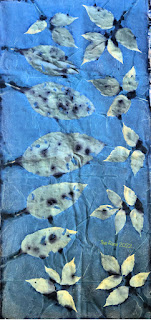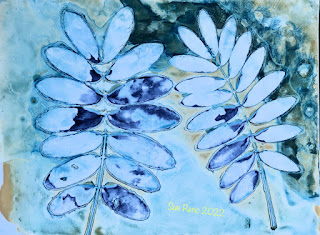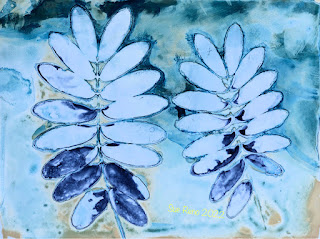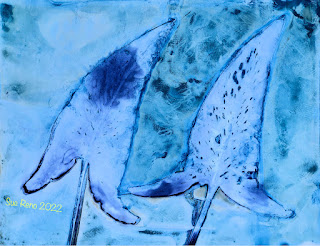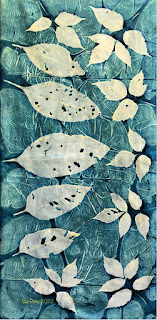More autumn printmaking goodness as I work on wrapping up the year in printmaking.
This batches features that large and luscious native wildflower, Joe Pye weed, Eutrochium fistulosum. I was never able to grow it to its full potential before moving to this property 3 years ago and finally situating it to its liking.
It gets very tall, and the flower heads in late summer attract all sorts of large and small pollinators and assorted insects.
I set up some prints using Solarfast solar dye products on cotton sateen.
Then I made a few straight cyanotype prints. I often work with wet fabric, where I have just applied the chemicals, but for these I used previously treated and dried panels, and misted them after adding the leaves. It's a fine distinction but it does make a difference in the way the print develops.
Here all are the panels after exposure but before rinsing.
That yellow color, because it was an area of the panel that was masked by the leaves, will mostly rinse out.
The same goes for that greenish color on the straight cyanotype panels. The orange markings were made by sprinkling the panel with grains of washing soda, sodium carbonate, before exposure. It changes the pH and thus the reaction of the chemicals.
And here are the results! This panel is about 2ft. x 4ft., and is just perfect for showing off the majesty of the stalk of Joe Pye weed.
These panels of individual leaves show off the minor insect damage they have accumulated by autumn.
The patterning on these reminds me of fireworks, or stars in the night sky.
I'm writing this in the midst of a polar vortex, with the temperature at 1F, and a wind chill of minus 20F something. It's a good day to remind myself that the garden will grow lush again in a while.
Thanks as always for reading! You can also follow along on your platform of choice:





